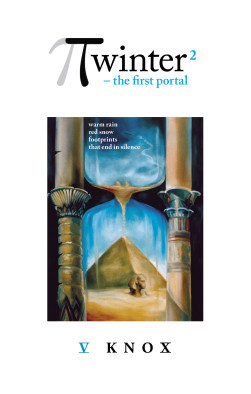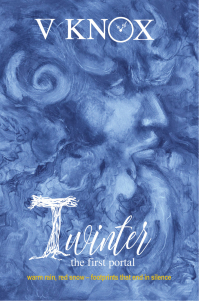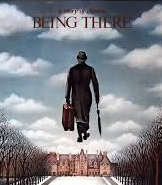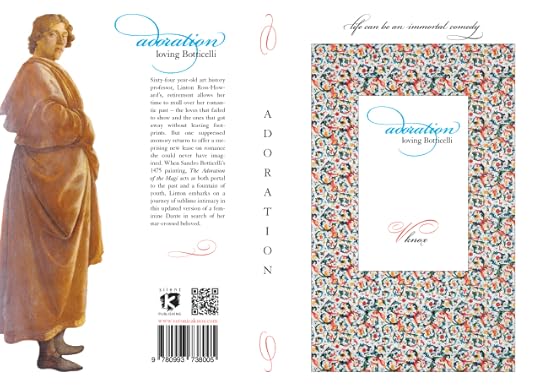Veronica Knox's Blog, page 13
September 6, 2016
THE TALE OF A DEADLY GRAPE-HEAD CLUSTER
 – a brief history of the ‘art’ of story… or lack thereof … when art shouldn’t imitate art
– a brief history of the ‘art’ of story… or lack thereof … when art shouldn’t imitate artIn art history 101, I learned the terms ‘grape-head cluster’ and the ‘archaic smile’. Art history 201 introduced me to ‘warts and all’ realism… and then full circle to art history 301 that celebrated the minimalism of emotionless abstracts, geometric grids, and installation art like a chair nailed to a wall or an unmade bed. Go figure. But all the arts are subjective. Beauty is in the eye of the beholder… or the reader.
Paintings are pretty much all show with no tell. A narrative painting is visual art that shows a story. What you see is what you get. But before artists wised up with anatomy, proportion, and perspective, art could be fairly flat. Even the lavish addition of gold leaf failed to breathe life into bland Madonnas or their accompanying bands of angels with vacant expressions. Enter, the grape-head world of characters lacking character.
Portraits that lack emotion are as transparent as a novel with 2-dimensional characters. Put generic characters on a blank page and somewhere a book slams shut. But, plump juicy stories still have to live on flat pages and screens. The expression: stories that jump off the page ‘springs’ to mind. Disney animations from thousands of drawings spring to mind. Emotionally bereft figures evoke the sound of crickets. Books hit walls. A symbolic icon implies a story learned by rote but they rarely fish the deeper waters of a compelling story.
The ‘grape-head cluster’ refers to a mandatory crowd scene in a painting where a group of anonymous extras appear to be arranged on bleachers. This may work for a school photograph, where students in the front row are seated and subsequent rows are arranged shortest to tallest. We’ve all been able to pick out the face of a parent from their ‘grape-head’ classmates bunched together. But that’s because individual people have unique features.
Early Byzantine paintings take ‘show don’t tell’ to a whole new level. They say little or nothing of profound consequence. They display bloodless bodies with ‘everyman’ faces who have never taken a breath. They lack emotional spark. They lack depth of field.
The ‘archaic smile’ is characteristic of the earliest Greek statues. They were pillar-like figures with surface features cut to suggest the fake smiles of a doll. No muscles flexed under their stone robes. In short, they lacked life. They lacked story.
writing imitates art
The literary equivalent to lackluster figures is the ‘talking head syndrome’ – colorless characters having a conversation on a field of white paper. No floors, walls or ceilings, to frame them. Minimalism is not advised in storytelling. Realism is the way to go. It’s emotional story realism that tracks a beeline to the bestseller lists.
the smile without mirth

a kore – a young girl

a kouroi – a young male
The ‘ARCHAIC SMILE’ describes carved expressionless ‘happiness’ without facial muscles. Imagine these two in conversation. Boy meets girl in a romance novel of love between puppets… a book slams shut.
Byzantine to Early Renaissance

Cimabue’s ‘Virgin enthroned with angels’ – 1295
CIMABUE’s ‘Virgin enthroned with angels’ – 1295 is a paranormal ‘story’ with no spirit. Solid gold halos add to the effect of vertical grape-head totem poles either side of an insipid Madonna. These angels can’t sing. They hardly exude joy. Cimabue was considered the last artist of the Byzantine tradition. The inhabitants of his paintings are as flat the surface they call home. His icons are superficially decorative because they were created for spiritual focus. They were never meant to reflect characters who lived next door. And… that is one messed up looking infant for a man who must have observed actual babies.

GIOTTO’s ‘Ognissanti Madonna – 1310
Cimabue’s student, GIOTTO, progresses… slightly. Now, I ask you, does that baby look like a chubby newborn? Its proportions reflect a shrunken adult. Its face is that of an old curmudgeon. Holy Mother Batman, that female is not holding her child safely. The infant has been stuck on like a collage. Not very cuddly.

DUCCIO’S ‘Maestà’ – 1308
Say no more. If you wrote a novel like this painting by DUCCIO, with a multitude of uninteresting supporting grape-head characters, how many literary stars would it generate? Here comes that lone-star review.
High Italian renaissance: part grape-head; part realism in a good way
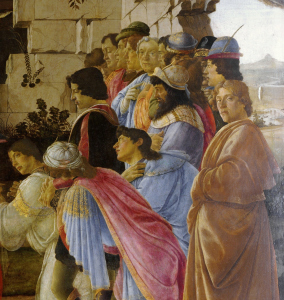
Botticelli’s ‘Adoration of the Magi’ – 1475
I love this painting. In fact, it inspired me to write an entire paranormal romance about its ‘main man’. Still, the figures displacing their grape-head ancestors must be ten feet tall or they’ve been arranged on convenient boxes that existed at the nativity scene. The face looking at us from the back row belongs to the man who commissioned this work. He has a story. The foreground figures are true-life portraits of the ruling class Medici family. Big thriller stories in that family! Botticelli has been ordered to cast them as actors in starring roles to cull brownie points. We call it favoritism or false advertising. The grape-head making eye contact with us from the back row ingratiated his position through the art of flattery. Ironic, since the figures in this painting have definitely advanced to three-dimensional. Especially, the figure in the lower right corner – a self-portrait of the artist himself, Sandro Botticelli. Like I said, his expression inspired an entire novel. This is a religious iconic work bursting with dozens of stories. Authors engage the indecently plump sixth sense of imagination.
warts & all
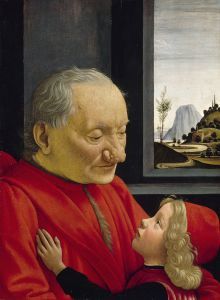
‘Boy with his Grandfather’ Domenico Ghirlandaio – 1490
Can description go a tad too far? Characters in a richly-painted storyline can obsess to the point of showing too many micro-details. Thrillers can ooze gory details in as many scenes as page counts will allow. The best characters are unforgettable one-offs who face inner demons and real struggles. They grow in arcs of surprising comeuppance. Authors reveal them word by word. Characters in a great story emerge from multi-layered angst – heroes who love and hate in breathtaking deeds of fight or flight. Stories like these luxuriate in color, emotion, textures, settings, fantasy, and lives ‘who’ deliver vicarious thrills of one kind of magic or another to dedicated readers of fiction. Compelling characters take stories to bestseller status. Books go ‘viral’. Browsers must duck their accompanying tsunamis of high-five stars.
Domenico Ghirlandaio – 1490 *A narrative painting with color plus emotion plus texture plus setting, and more importantly, a STORY about a boy and his grandfather. What has been said? Has the child asked a question? From his expression, what will the grandfather answer? These two are communicating, oblivious of we viewers.. I mean, readers. Because humans read pictures. We think in pictures and we write in pictures. Methinks this painting could be a poignant scene in a novel of historical fiction.
… and home again
– to fully realized characters inhabiting real space within a story well-told… I mean, shown.
Movies can evoke every emotion with a few well-placed swells of music. Creaking stairs and a snuffed candle in a creepy house sets a viewer squarely in the heart of a ghost town. Movie stars are shorthand characters. We would pay to watch them read phone books. Hopefully, the books we read ourselves contain more theatre. And speaking of theatres… from the stage, actors gaze out over rows of ‘grape-head audiences’ seated in tiered rows. An audience essentially remains anonymous. They are the crowds in a painting who applaud and… write reviews.
Writers may work with a smaller palette than movie-makers’ special-effects but we use more ‘colors’ (commonly known as a thesaurus). To paraphrase a popular song: its only words and words are all we have to take your heart away.
What characters in a book left you peering into a void?
Did droning dialogue in a white room leave you yawning?
Amusement isn’t enough: Did you laugh at a passage out loud?
Fear isn’t enough. Did you cringe? Did you recoil from a protagonist’s night terrors? Did you have to close the book, check the lock on the front door, and turn on all the lights?
A landscape isn’t enough: Could you walk over the next hill and discover a blue lake?
Birds aren’t enough: Did you see the color of their plumage? Did they chirp or screech? Were they crows or peacocks?
A green lawn isn’t enough: Did you inhale the scent of newly-mown grass?
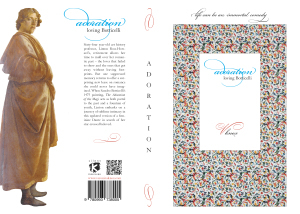 If you’re lucky, you may find a time-slip novel starring a screeching peacock sashaying through ghosts over a vast emerald lawn that reaches towards a blue lake… oh, wait… I wrote one of those, inspired by a Botticelli painting.
If you’re lucky, you may find a time-slip novel starring a screeching peacock sashaying through ghosts over a vast emerald lawn that reaches towards a blue lake… oh, wait… I wrote one of those, inspired by a Botticelli painting.


August 30, 2016
BUILDINGS HAVE FEELINGS TOO
Buildings have feelings too but Bede Hall has no intention of going gentle into a good night
TWINTER – the first portal – by
When developers earmark its grounds for a golf course with an exclusive country club, Bede Hall, an abandoned stately, home rises to a battle cry that resounds off nearby Hadrian’s Wall and wakes up every earth spirit within a radius of fifty miles, at least one Roman god, and several Egyptian ones.
Its beloved matriarch, fading away under a temporary curse of old age in a retirement home, heeds the call. With her she brings the fresh energy Bede Hall needs to survive, in the form of her grandchildren – a pair of remarkably psychic, thirteen-year-old, twins.
A sentient structure of such considerable historical proportions accumulates an army of allies and enemies but Bede Hall has more than a for sale sign to vanquish. It has a child ghost to protect, secrets to spill, and a future to save.
It helps that strangeness runs in the family.
Books can have renovations too:
… literary bodywork, cover face-lifts, and new extensions when a middle-grade series advances to Y/A.
‘Twinter – the first portal’ is for middle-grade readers; its next building phase ‘Time Falls Like Snow’ will progress to young adult readers to be published in the spring of 2017.
‘TWINTER’S 2016 FACE-LIFT
ORIGINAL COVER of 2013 2016’s BRAND NEW LOOK
Twins befriend the ghost of a nine-year-old girl living in Bede Hall, their grandmother’s abandoned stately home set in a green pocket of history.
Bede Hall’s loyalties lie at the crossroads of blistering sand its cool oasis of an English garden where the ‘Green Man’ continues to rule an idyllic old world during its timeless glory days. But the ancient god of the forests must overrule the distant past where elementals and animal-headed gods destroyed human civilization at least twice.
Once through the time portal in the attic’s forbidden wintry room, the twins face a landscape of ancient Egyptian deserts that sizzle against a mirage of frozen wasteland where even ghosts can die.
https://www.amazon.com/dp/0993738044?ref_=pe_584750_33951330
Some buildings just won’t let go
Have you been in a cottage or castle and felt the vibes of a place well-contented, discontented, or malcontented?


August 22, 2016
FICTION – CRAZIER THAN QUANTUM PHYSICS
BEING WAY OUT THERE
A master of ceremonies on a pantomime stage, sidles up to the edge of the stage wearing his top hat and tails, waves his arms, and addresses the audience: “Did you know the universe is crazier than we can imagine!” he declares…
There follows one of only two time-honored responses. The crowd shouts in unison: “OH NO IT ISN’T!”
“However,” he stage-whispers behind his hand. “It’s NOT crazier than fiction!”
The crowd booms. “OH YES IT IS!”
Like the cosmos, there are no limits to fiction. None. Nothing is too ‘OUT THERE’ or too internally, HERE.
There is no finer way to put this than by a beloved scientist who said it with style and grace:
“Imagination will often carry us to worlds that never were, but without it we go nowhere.”
– CARL SAGAN
We head towards the nudge of ‘I wish’ without apology because the land of ‘I-wish-it-were-true’ is as close as close as under our skin. We never fully grow up. Why settle for anything less than wild ideas? The universe is one never-ending wild idea!
Stories of immortal beings who once walked among us, stirring the soup of fate with the thighbones of our ancestors to see what would crawl out of the swamp, is still required reading for adult humans. Fiction is the antidote for days too normal to be endured. The science-fiction of spaceships and paranormal time-travelling snaps the leg irons of earthbound 9 to 5 drudgery. Anonymous cubicles of employment, self-imposed or otherwise, are hardly final frontiers.
For relief, comedy can be lived in half-hour increments on TV. We want to laugh in spite of the relative grimness of our insignificance ‘situations’ spinning on a ‘pale blue dot’. We crave magic. But after the laugh track fades, the wildest stories follow us to bed and color our dreams. So dream big.
Enter the world of unlimited dreams. Set aside your sweatpants and slip into a long gown. Sip champagne with Jeremy Irons in a gondola, ring a bell for Carson the butler, revisit ‘Brideshead’, fit into a slinky size 5. Take tea with a mad hatter. Cast a spell where you can best nurture your inner world. Grow wings and grab a magic sword. Build Rome in a day… movie makers do it all the time. And if you’re not starring in your own movie what (do you imagine) are you doing here?
BE HERE, NOW…. IMAGINE FROM THE EDGE
BOOK a deserved trip to the far reaches of ‘out there’ or ‘trip out’ on a deserved BOOK to your innermost universe. Champion your third-childhood. If not now, when?
If we’re as savvy as Peter Pan we never grow up. It’s a promise we make to ourselves every time we open a deeply ‘curiouser’ book.
What children’s book first captured your imagination?
What new paranormal fiction will capture your shadow now?


August 17, 2016
DOWN TO EARTH IS FOR SISSIES
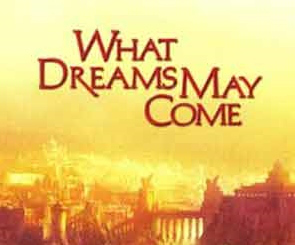
“Old age is no place for sissies”
– Bette Davis
Since biology has determined that I must sleep 30% of my life, I’ve given myself permission to dream big and write surreal because Bette Davis was right, and
Self-publishing is no place for sissies .
Down-to-earth is too short a visit if you bypass outer space, inner space, and surreal space. Do not pass Go. Do not collect dust. Savor middle earth. For a good time, play a little in the supernatural, wander through a distant century, or vacation in the stars. Star Trek offers future careers where there’s no money, no mortgages, and no dirty dishes. Thank you, food replicators. Now that’s freedom. That’s boldly going.
Call fiction escapism if it pleases you, but if you’re going to escape, consider taking vacations in the far reaches of an author’s wildest dreams. ‘Down-under’ the book covers in the outback of our imaginations lies time-travel, the afterlives of famous men and women, and the unlimited secrets of mind-blowing science.
And since daydreaming surely accounts for the second 30% of an earthling’s allotted years, entertainment time is well-spent in uplifting hours. There’s not a lot we can do about nightmares but we can dream with lucidity, daydream in Technicolor, and be more creative thinkers.
Finally, barring the amazing interludes of earthshattering love and art, the last, and certainly not the least, 30% of a human three-act-life is the unavoidable commerce of earthtime’s nittiest and grittiest angst.
Your life is 100% your time. Your choice: more true-to-life stories? or the world of fiction that offers WHAT YOU WISH WERE TRUE?
Nothing is stranger than fiction if we imagine with style. Death is the beginning. Ghosts who walk through walls can sit solidly on chairs without the humiliation of pratfalls to the floor below, men and women love across time, a ghost child from the Titanic can grow up, and (I know this) paintings can talk.
At least, portraits speak up when they have something urgent to say. They are, after all, the ‘flies on the wall’ who see and hear like the servants of old. They are a version of Victorian children, to be seen and not heard until an author decides it’s time to spill their beans. And then watch out. A lot of beans will die.
 I’ve spent a lot of my time in fifteenth-century Florence, and I spill a fair amount of magic beans in my stories
I’ve spent a lot of my time in fifteenth-century Florence, and I spill a fair amount of magic beans in my stories
Why wouldn’t the ‘Mona Lisa’ have an axe to grind if she’s been misidentified? Why wouldn’t she rebel when forced to live in the Louvre, denied of her true identity? Why would she entertain a perpetual state of decorum if her name was eclipsed in favor of a silk merchant’s wife?
Wouldn’t she be downhearted after her accomplishments were invisible by virtue of the time in which she lived? Wouldn’t she feel demoralized if her artistic creations were eclipsed by her brother’s, considering her brother was Leonardo da Vinci?
And since, in our most imaginatively logical hearts, we believe a canny photographer can capture a soul, can we deny the possibility that Leonardo could easily have captured the soul of his sister in a painting? And if so, is it any wonder that Lisa becomes dispirited, trapped there in the Louvre inside a two-dimensional picture plane.
Another museum visitor makes a snide quip to a stranger, and Ms. Lisa’s had enough. The straw is broken; it’s time to be known for all three of her dimensions. She waits for the opportunity to escape on the coattails of an autistic child who thinks beyond the laws of physics.
WHY SETTLE FOR DOWN-TO-EARTH WHEN FICTION DELIVERS THE STARS?


August 6, 2016
LOVE POETRY BEYOND THE GRAVE
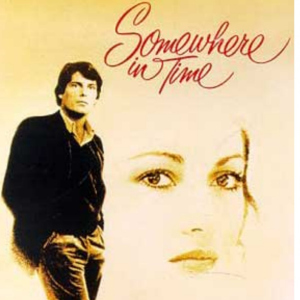 Fiction glorifies the art of paranormal romance,
Fiction glorifies the art of paranormal romance, reincarnation,
and eternal bliss
Two Dantes say so:
“I have been here before,
But when or how I cannot tell:
I know the grass beyond the door,
The sweet keen smell,
The sighing sound,
the lights around the shore.”
– Dante Gabriel Rossetti
A different Dante traipses through hell to find his soul mate, Beatrice, a girl he fell in love with from afar:
VITA NUOVA
“In that book which is my memory,
On the first page of the chapter
That is the day when I first met you,
Appear the words: here begins a new life”
– Dante Alighieri
from ‘The Divine Comedy’
Dyed in the wool romance fans are moths to a spiritual flame that, more often than not, in real life, turn out to be an intense moment of random chemical heat that lasts as long as a match flare. But women are prone to flings with ghostly lovers and night phantoms who woo from the beyond… and gentle poets immortalize their lady loves with exquisite words and paintings.
Ghostly lovers may fade in the morning but they never cheat. Undying love, it seems, is saved for dabbling with the deceased in lucid dreams. Barring that, fictional heroes in books, an historical larger-than-life figure, and ‘reel-life’ actors on a screen, stand in nicely for ethereal specters. Vicarious love is part of a healthy psyche. The lovelorn and insatiable dreamers are made whole romancing the paranormal.
It’s said that it’s better to have loved and lost than not at all.
But paranormal poetry goes one better: it’s better to have won the heart of a passionate poet than succumb to a lusty one-night-stand with a lantern-jawed oiled stranger in need of a shirt – a two-dimensional narcissistic hunk peeled from the front cover of a generic romance novel. At least the undying love of a ghost spans four dimensions.
The art of sensual loving requires Shakespearean words of passion that transcends the last breath and cheat the worms.
Eternal lovers reincarnate, wandering through the centuries on memories as fragile as a daisy chain to rekindle love profound enough to defy death. Love as strong as a knight’s ‘armor’ rather than as fleeting as the ‘amour’ of nights spent horsing around the rough and tumble pages of a shallow novel. True love is serious. Flings are… well, flings.
BUT LOVE IN THE AFTERLIFE NEVER DIES; it’s as near as a subconscious romp on your 800 count Egyptian cotton sheets with the ghost of a lover who got away.
ROMANCING THE PARANORMAL
In my paranormal romance ‘ADORATION – loving Botticelli’, art history professor Linton Ross falls in love with a figure in a fifteenth-century painting when she is an art student, only to be obsessed by him her entire life, but her world changes when retirement at age sixty-five gives her pause to visit the portrait one last time.
“I checked the painting. All was serene. Once more, Mars rested in perpetual springtime, sleeping naked, and Venus stared blankly with a sorrowful expression of abandonment that I understood. She’d had the poor judgement and bad timing to fall in love with a man she couldn’t have.”
 My paranormal romance, inspired by a pair of baby shoes in the Halifax Maritime Museum’s Titanic exhibit, ‘THE UNTHINKABLE SHOES’ is an extraordinary love story of reincarnation and sacrifice when two children on board Titanic who were destined to marry, are separated by death. A reincarnation attempt goes awry with bizarre consequences.
My paranormal romance, inspired by a pair of baby shoes in the Halifax Maritime Museum’s Titanic exhibit, ‘THE UNTHINKABLE SHOES’ is an extraordinary love story of reincarnation and sacrifice when two children on board Titanic who were destined to marry, are separated by death. A reincarnation attempt goes awry with bizarre consequences.
Do you have a favorite love poem?
Mine is the deliciously sensual ‘The Love Song of J. Alfred Prufrock’ by T.S. Eliot. Enjoy an excerpt on me:
THE LOVE-SONG of J. ALFRED PRUFROCK
“And would it have been worth it, after all?
After the cups, the marmalade, the tea,
Among the porcelain,
Among some talk of you and me,
Would it have been worthwhile,
To have bitten off the matter with a smile,
To have squeezed the universe into a ball?”
– T.S. Eliot
Yes… it definitely would!
What love story makes you wish ghostly lovers were real? How about ‘Somewhere in Time’ or the amazing paranormal time travel romance, ‘Outlander’?


July 31, 2016
THE ‘MONA LISA’ IS ONE HAUNTED LADY

Leonardo is only one-tenth of the law but possession is nine-tenths of the truth
What if a contact-high with a famous portrait is so visceral that the sitter follows you home and changes your life forever?
ART IMITATES LIFE: ‘SECOND LISA’ – a paranormal biographical trilogy, was inspired by the only mention of Leonardo da Vinci’s half-sister, Lisabetta Buti, in a census report, and the irony of an anonymous woman becoming the most famous face in the world.
LIFE DUPLICATES ART: I carried Lisabetta’s story around for ten years after studying art history at university, utterly frustrated by the frequent gaps in historical documents. There were too many cold trails of lost paintings, and speculative iconography only muddied the waters of truth. Even knowing which artist painted what was suspect. Who better to ask than the paintings themselves? Barring their silence, lucid dreaming, stargazing, mindfulness, and visualization are always sensible ways to time travel to the past. Surprise. That old adage of asking and receiving, delivers. Amazing stories emerged from my innocent questions. There’s a lot to be said for selective hearing and a vivid imagination.
What if paintings were compelled to speak or mind-read or hypnotize in order to impart a character’s thoughts as in ‘The Portrait of Dorian Gray’ that aged while the man remained young?
I premise that paintings on a wall see and hear everything. They are the cameras and tape recorders of their time. I love the concept of figures reaching out of their frames for help or inviting a viewer into their world to impart wisdom. Would you go if invited?
DEATH GOES ON: with time travel, even the most beleaguered paintings never die and longsuffering sculptures never lose their heads. I simply adjust the dials of my time machine to arrive precisely at the crossroads where art and history part ways. After that, it’s as elementary as Sherlock imparting one of his theories to Watson. But paintings can be part of a political game. The study of meaningful images and their careful placement within a picture plane are often covert clues of the artist’s subversive viewpoints, punishable by death.
I imagine paintings as doorways to a parallel world where I can eavesdrop and wander around, say the fifteenth-century Florence, as invisible as the majority of their female population. I suppose I should be careful what I wish for, but I’ve always wanted to step into certain narrative paintings to discover who the models were in real life, and why were they so grouped together? What ‘between the lines’ stories did they tell? Why did the artist choose them to be in his visual play?
I wrote ‘Second Lisa’ based on the classic premise to ‘be careful of what you wish for’ and the assumption that, in the spirit of truth, some wishing wells are more or less holding pens for chastening spells. Spells that deliver exacting literal interpretations during that hazy moment when a casual wish becomes a serious curse.
Try evading the ‘Mona Lisa’s gaze sometime. Have you ever noticed… she never lets you out of her sight? She is tenacious. She’s learned to be. On the five-hundredth-anniversary of her captivity, she has a window of opportunity for escape that lasts one full year.
When her champion arrives as a nine-year-old boy, Lisa has no intention of letting Jupiter Lyons out of her grasp. But then, the autistic child is delighted to lead her from the Louvre. They become instant allies, each needing a virtual press release to be recognized for who they fully are. But when they meet, there is only nine months left of Lisabetta’s window. Just enough time to gestate a new life.
‘MONA LISA’ IS MORE MYSTERIOUS THAN A SMILE … in her own words:
“Dear child, my life led me here to meet you precisely on this day. I have been waiting such a long time – five-hundred-years to have my say. It’s time. You must listen because… because ‘you’re the one.’ Please permit me to explain. If your name were to be irretrievably lost, cut apart from your time and permanently erased from the world, overshadowed by the lies of silence… were you ever truly here?” – Lisabetta
ART IMITATES LIFE… LIFE DUPLICATES ART… DEATH GOES ON
In ‘SECOND LISA’, ‘Mona Lisa’ has an opportunity to free herself from an ancient curse after her soul is captured in a portrait – an extraordinary trilogy of misadventure and reincarnation.
What portrait has given you chills, good or bad? What questions would you ask a painting? What figure in a painting would you invite home?
My favorite portraits are: The ‘Girl with a Pearl Earring’ by Vermeer; Leonardo’s ‘Mona Lisa’; Botticelli’s ‘Adoration of the Magi’; and the self-portraits of Rembrandt and Albrecht Durer.
HAVE YOU EVER FALLEN IN LOVE WITH A FIGURE IN A PAINTING? … which segues nicely into my next post about paranormal romance and a woman who did.


July 25, 2016
PARANORMAL – IT’S NOT JUST FOR WEIRDOS
 FICTION IS ONE BIG X-FILE
FICTION IS ONE BIG X-FILEWhy is the paranormal so fascinating when we know it’s not true? Clearly and scientifically it can’t be true, and yet, our lives remain middle of the road dull without a toe-dabble into its imaginative waters.
But that ghastly genre word ‘paranormal’ is so misleading. It usually delivers expectations of terror, dread, Gothic horror, vampires, and zombies. Paranormal doesn’t have to be creepy.
UFO = Unidentified Fictional Objectivity
What softer word may be used to describe a story with less fright?
Because there IS a softer side to paranormal where the curious reader has a gentle experience of the unreal and the surreal is a compelling revelation. Not bloodthirsty curse-driven comeuppances but pleasant curvilinear journeys around subjective human experience –stories narrated from the afterlife or misadventures into loops of reincarnation, lucid dreaming, the outskirts of Premonitionville, quantum leaps of time-slipping, and insightful possibilities venturing into zones with more relaxed outer limits. We can be a wondering wanderer through the doors of perception and peek behind the looking glass without having to sleep with a light on afterwards.
Champion the unheard of. Address the unspeakable. Dismiss the notion of impossible. See dead people… in a good way. Fill your pockets with unbelievable confidence. Flip off a demon, bare your teeth at a vampire, beam yourself senseless. Delight that the afterlife is a country of our own making. We can die outside the box and reincarnate at will.
The key word in paranormal fiction is ‘fiction’! (translation: a story that exceeds the constraints of normal of lying)
The word fiction notifies you that something or everything in a story is untrue. Paranormal informs a reader that the story operates within the flexible realm of metaphysics. Language goes one better and adds prefixes to nice calm words in order to jazz up the tension: un, other, super, extra, and para (which means above). These beget: unreal, surreal, otherworldly, supernatural, extraordinary, and paranormal. Mystical, fantasy, make-believe, and magical are icing on the cake.
WE WANT TO BELIEVE
EXTRAORDINARY TRUTHS ARE INTERNAL; NOT ‘OUT THERE’
What PARANORMAL-FRIENDLY stories are your favorites? Mine are:
BOOKS (and also films): ‘The Time Traveler’s Wife’, ‘The Lovely Bones’, and the ‘Harry Potter’ series. MOVIES: ‘The Lake House’, ‘What Dreams May Come’, ‘Somewhere in Time’, ‘Field of Dreams’, ‘Groundhog Day’, ‘Back to the Future’, ‘Close Encounters’, ‘Jurassic Park’, and ‘Ghostbusters one’


July 21, 2016
ANIMATIONS – THE BEST MEDICINE FOR VERY OLD KIDS
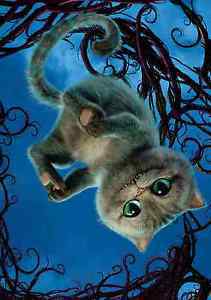 to learn how to be a smart kid
to learn how to be a smart kidWhen we’re small we want to be grown up. When we’re teenagers we want to be independent. But when we grow too old to be astronauts and ballerinas we can do backflips with ‘Kung Fu Panda’.
A dive down the rabbit hole can do us the world of good. Strap on your 3-D glasses, hang up your cane and leave your curmudgeon-ness at the door… but keep the hearing aid.
Second childhood is designed for baby boomers
Below the earth is where the fun begins. It’s over the top. Where else could it be but up a beanstalk or down a rabbit hole?
Do the left side of your brain a favor, engage non-local mind, and purchase a one-way ticket to Wonderland. Indulge your deepest instincts in a refreshing tea party of mad conversation. Embrace the absurd. Binge on popcorn and a rompingly-insane fantasy, Disney’s ‘Alice Through the Looking Glass’ (hint… ignore the critics). But don’t go if you’re unwilling to abandon the world of logic. Forfeit the sensible. Get lost where getting lost is the point. That’s what old age is for.
In the sixties we ‘boomers’ were too busy letting it all hang out to see the bigger picture. Perhaps it was too soon for most of us to stop and smell the roses. Certainly, Lewis Carroll the creator of ‘Alice,’ didn’t contain himself in 1871.
We are dreamers calibrated to visualize. Fantasy enabled our species to survive when sentient weather ruled our days. That primordial dream when our friends were trees and streams, and unwholesome craziness lived on mountaintops well out of reach. It took generations to breach those heights and discover that the Titans were small enough to fit into the palms of our hands with imagination to spare.
Sometimes it takes a thousand years to discover ‘who-done-it’( um… nobody as it turns out… it was evolution). And sometimes it takes only a hundred and forty-five years to turn a beloved classic into the pages of a moving picture screen.
Apparently, cats are philosophers, hares make tea, caterpillars are sublimely ironic, and many a wise word is spoken in jest by a genie out of the bottle. Who knew? Authors of children’s fiction knew. The older we get, the more we remember this.
What were your favorite children’s books reread as an ‘adult’? Mine were:
‘Winnie the Pooh’ (read through the eyes of Benjamin Hoff’s brilliant ‘The Tao of Pooh’ and ‘the Te of Piglet’; ‘Alice Through the Looking Glass’ (Disney’s 3-D animation seen a few weeks ago); and ‘Peter Pan’ (revisited in the movie ‘Hook’).


June 15, 2016
ALAN RICKMAN FOREVER
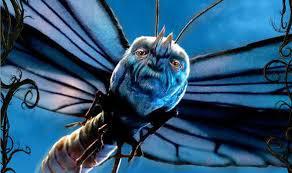 ALAN THROUGH THE LOOKING GLASS
ALAN THROUGH THE LOOKING GLASSHere’s one for the books. In Disney’s “Alice Through the Looking Glass,’ Absolem the caterpillar, played by the late Alan Rickman, surfaces reborn as a blue butterfly. He shadows Alice before leading her (and us) back into the ‘otherworld’ behind the looking glass.
 A butterfly is a symbol of rebirth
A butterfly is a symbol of rebirthThankfully, Alan lives on in all of his amazing roles but this is a beautifully symbolic tribute. I found it profoundly moving when the credits dedicated the movie to ‘our friend Alan Rickman’
And after all, the definition of animation is the imparting of life and spirit to that which springs purely from human imagination.


April 21, 2016
Clap if you WANT to believe in fairies
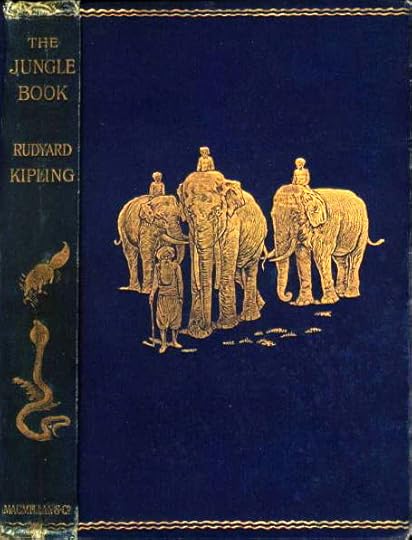
the original cover for Rudyard Kipling’s ‘The Jungle Book’
If you’re human, fiction is a big deal to you.
Clap if you WANT to believe in: Tinkerbell, dragons, time travel, space ships, ghosts, lost cities, the holy grail, mystical serendipity, numinous energy, sentient pond scum, divine intervention, soul mates, talking animals, life after death, angels and demons, and galaxies far far away.
For a golden hour your world is happily under a hill in middle earth or hurtling at warp speed on the Starship Enterprise or wandering an alley behind the Leaky Cauldron.
The last time I visited the cinema (a few days ago to see ‘The Jungle Book’ an amazing story, by the way) the popcorn cost almost as much as the admission. Remember, ‘The Jungle Book’ was a BOOK first… hey, it’s right there in the title!
Coffee is a glutted market. Clap if you believe in coffee. Publishing is a glutted market. Clap if you believe in original stories. And if you believe in committed authors, the next time you visit that glutted ‘BOOK JUNGLE’ dollar store, please consider the heroic effort of months and sometimes years it takes for an author to create a literary escape. For you.
Now, followers of fantastical fiction, I ask you, do you work for free? I’m guessing Rudyard Kipling didn’t work for free. Do you attend movies for free? Clap if you believe in fiction… you know you want to.
Every now and then, in an author’s fantasy, a person forgoes the price of a designer coffee and a chocolate croissant or a bag of movie popcorn in favor of purchasing a book. But, that’s just us writers of fiction – we dream big!





